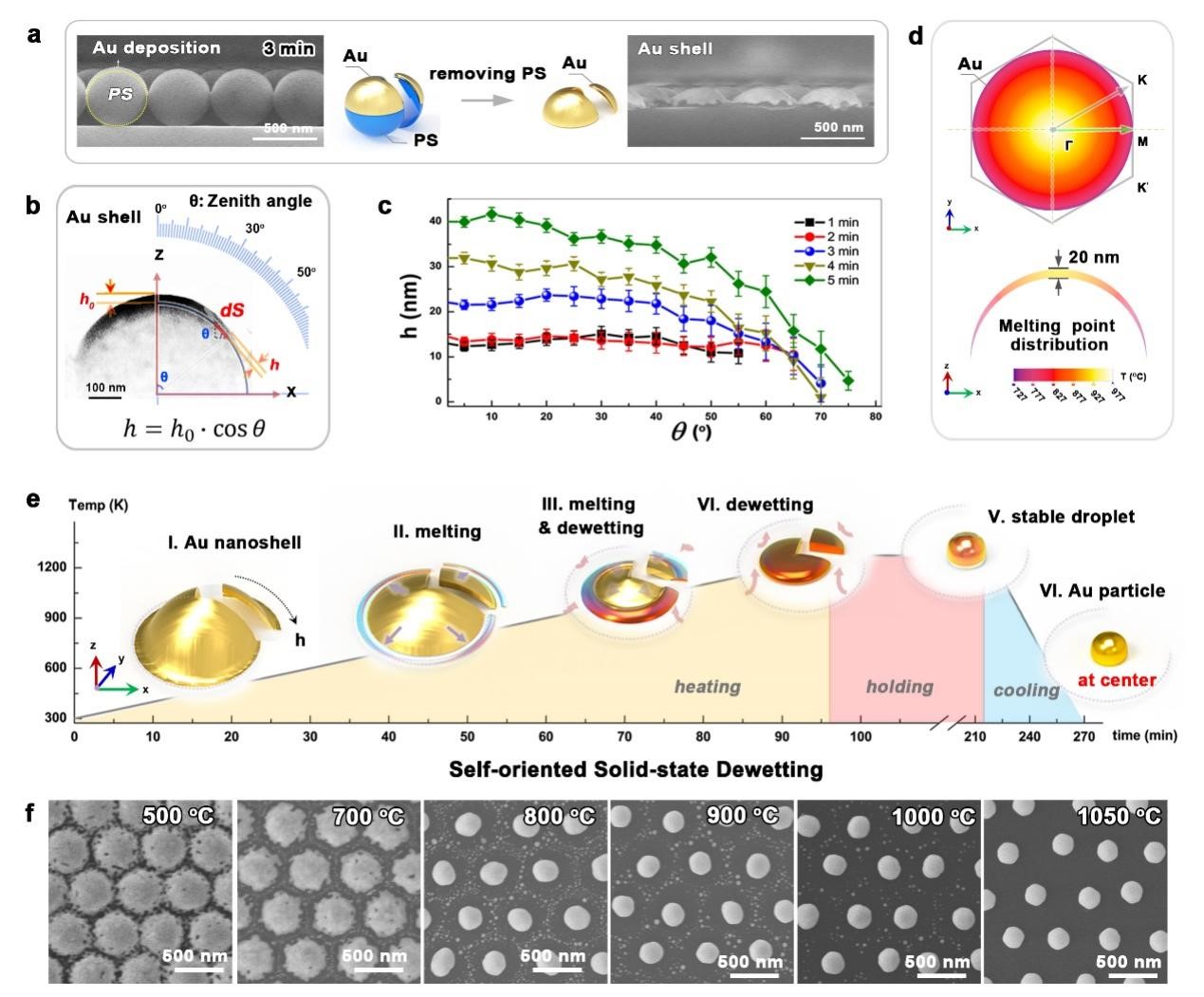| Feb 01, 2024 |
Wafer-scale patterning of gold nanoparticle arrays enables enhanced biosensing
(Nanowerk News) A research team led by Prof. LI Yue from the Hefei Institutes of Physical Science of the Chinese Academy of Sciences has introduced a self-confined solid-state dewetting mechanism. This innovation significantly reduces the reliance on complex nanofabrication techniques, paving the way for efficient wafer-scale patterning of non-closely packed (NCP) gold nanoparticle arrays.
|
|
The results of this study have been published in Advanced Science ("Self-Confined Dewetting Mechanism in Wafer-Scale Patterning of Gold Nanoparticle Arrays with Strong Surface Lattice Resonance for Plasmonic Sensing").
|
 |
| Illustration of the self-confined solid-state dewetting of gold nanoshells deposited on a spherical surface. (Image: LIU Dilong) (click on image to enlarge)
|
|
Gold nanostructures play a critical role in biosensing applications, but have faced sensitivity limitations due to ohmic and radiative losses in metal. The strategic arrangement of gold nanostructures into 2D NCP arrays can reduce radiative loss and support a plasmonic surface lattice resonance (SLR) property with a remarkable two-orders-of-magnitude increase in sensitivity theoretically.
|
|
In this study, the researchers revealed a mechanism called self-confined solid-state dewetting, which completely changes nanofabrication techniques for wafer-scale patterning of NCP gold nanoparticle arrays. By combining this method with a soft lithography process, they have solved the problem of reproducibility associated with the self-assembly of colloidal crystals, which was previously difficult.
|
|
This new method allows them to easily fabricate a batch of NCP gold arrays with consistent ordering and optical properties. These nanoparticle arrays show strong SLR properties, which are useful for sensing tiny molecules when they are excited by light. This advance, which achieves sensitive plasmonic sensing of molecular interactions using a simple transmission setup, could lead to better portable devices for detecting small amounts of substances.
|
|
"We expect that this work could open a door for sensitive SLR biosensing applications and shed light on portable commercialization," said Dr. LIU Dilong, a member of the team.
|

